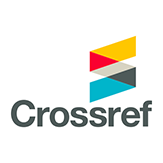Determinan Sosial Ekonomi Konsumsi Minuman Berpemanis di Indonesia: Analisis Data Susenas 2017
Abstract
Keywords
References
(1) Ansem dkk. 2014. Socio-economic inequalities in children’s snack consumption and sugar-sweetened beverage consumption: the contribution of home en¬vironmental factors. British Journal of Nutrition. Cambridge University Press. 112(03): 467–476.
(2) Battram dkk. 2016. Sugar-Sweetened Beverages: Chil¬dren’s Perceptions, Factors of Influence, and Sugges¬tions for Reducing Intake. Journal of Nutrition Ed¬ucation and Behavior. 48(1): 27–34.e1.
(3) Belotti dkk. 2015. twopm: Two-part models. Stata Journal.15(1): 3–20.
(4) BPOM RI. 2018 Peraturan Badan Pengawas Obat dan Makanan Nomor 30 Tahun 2018 Tentang Angka Konsumsi Pangan. Jakarta.
(5) CDC. 2018. Get the Facts: Sugar-Sweetened Bever¬ages and Consumption, Centre of Disease Control and Prevention. Accessed: 26 November 2018
(6) Gesualdo dan Yanovitzky. 2019. Advertising Suscep¬tibility and Youth Preference for and Consumption of Sugar-Sweetened Beverages: Findings from a Na¬tional Survey. Journal of Nutrition Education and Behavior. Elsevier Inc. 51(1): 16–22.
(7) Gujarati. 2004. Basic Econometrics, in Basic Econo¬metrics. Fourth. The McGraw−Hill Companies.
(8) Harvard University. 2009. How Sweet Is It?.
(9) Hu dan Malik. 2010. Physiology & Behavior Sug¬ar-sweetened beverages and risk of obesity and type 2 diabetes : Epidemiologic evidence. Physiology & Be¬havior. Elsevier Inc., 100(1): 47–54.
(10) KBBI. 2019. Definisi Internet. 6 January 2019
(11) Kemendikbud RI. 2019. Definisi Media Sosial. 6 Jan¬uary 2019.
(12) Kemenkes RI. 2013a. Peraturan Menteri Kesehatan Republik Indonesia Nomor 30 Tahun 2013 Tentang Pencantuman Informasi Kandungan Gula, Garam, dan Lemak Serta Pesan Kesehatan untuk Pangan Olahan dan Pangan Siap Saji.
(13) Kemenkes RI. 2013b. Riset Kesehatan Dasar Riskesdas 2013. Jakarta.
(14) Kemenkes RI. 2018. Profil Kesehatan Indonesia Tahun 2017. Jakarta.
(15) Manyema dkk. 2014. The potential impact of a 20% tax on sugar-sweetened beverages on obesity in South African adults: a mathematical model. PloS one. 9(8): e105287.
(16) Manyema dkk. 2015. Decreasing the Burden of Type 2 Diabetes in South Africa: The Impact of Taxing Sugar-Sweetened Beverages. PloS one. Edited by P. H. M. van Baal, 10(11): e0143050.
(17) Masri, E. 2018. Faktor Determinan Perilaku Konsumsi Minuman Berkalori Tinggi pada Mahasiswa. Jurnal Farmasi dan Kesehatan. 8(2): 53–63.
(18) Rahardja dan Manurung. 2017. Pengantar Ilmu Ekonomi (Mikroekonomi dan Makroekonomi) Edisi Ketiga. Ketiga. Jakarta: Lembaga Penerbit Fakultas Ekonomi Universitas Indonesia.
(19) Ramadhani dan Mahmudiono. 2018. Hubungan Konsumsi Sugar-Sweetened Beverages dengan Kejadi¬an Diabetes Melitus pada Lansia. Media Gizi Indo¬nesia. 13: 49–56.
(20) Republik Indonesia. 2007. Undang-Undang Republik Indonesia Nomor 39 Tahun 2007 Tentang Peruba¬han Atas Undang-Undang Nomor 11 Tahun 1995 Tentang Cukai.
(21) SHANG dkk. 2012. Report on Childhood Obesity in China (9): Sugar-sweetened Beverages Consumption and Obesity. Biomedical and Environmental Sci¬ences. 25(2):125–132.
(22) Siswanto dkk. 2014. Buku Studi Diet Total: Survei Konsumsi Makanan Individu Indonesia 2014. Ja¬karta. Edited by D. K. Trihono, Atmarita, Abas Basuni Jahari. Badan Penelitian dan Pengemban¬gan Kesehatan 2014.
(23) Tasevska dkk. 2017. Determinants of Sugar-Sweetened Beverage Consumption among Low-Income Children: Are There Differences by Race/Ethnicity, Age, and Sex?. Journal of the Academy of Nutrition and Dietetics. Elsevier Inc. 117(12):1900–1920.
(24) Trivedi, A. C. C. P. 2009. Microeconometrics Using Stata. Stata Press.
(25) U.S. Department of Health and Human Services and U.S. Department of Agriculture. 2015. Dietary Guidelines For Americans 2015-2020 Eight Edition. XIII. DietaryGuidlines.gov.
(26) Waterlander dkk. 2014. Effects of a price increase on purchases of sugar sweetened beverages. Results from a randomized controlled trial. Appetite. 78: 32–9.
(27) WHO. 2018a. Noncommunicable diseases, World Health Organization. 12 September 2018.
(28) WHO. 2018b. Noncommunicable Diseases Country Profiles 2018. Geneva. doi: Licence: CC BY-NC-SA 3.0 IGO.
(29) WHO. 2018c. Obesity and overweight, World Health Organization. 27 August 2018.
(30) WHO. 2018d. Reducing free sugars intake in chil¬dren and adults, e-Library of Evidence for Nutrition Actions (eLENA). 26 November 2018. .
DOI: 10.7454/eki.v4i1.3066
Refbacks
- There are currently no refbacks.








